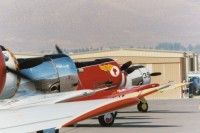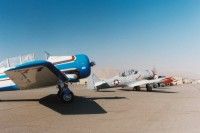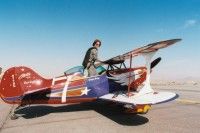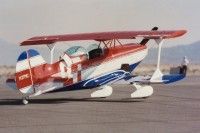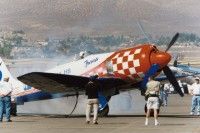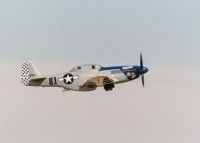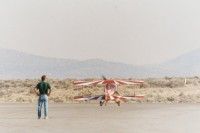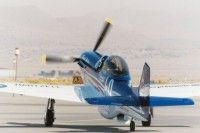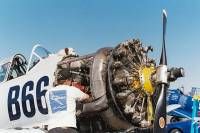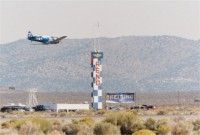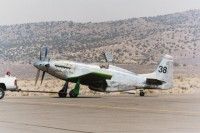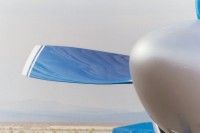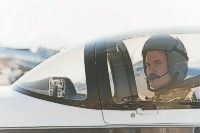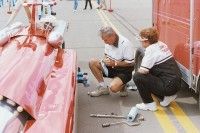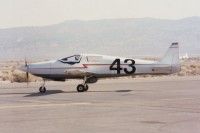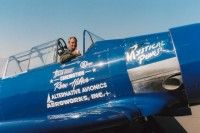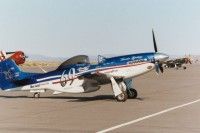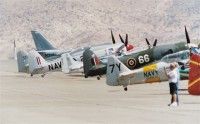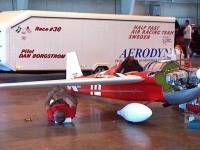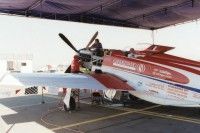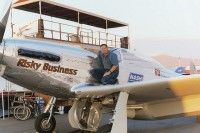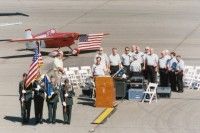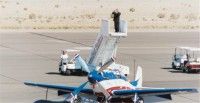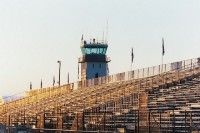 Each year, September brings aviation fans the National Championship Air Races, staged at Reno/Stead Airport in Reno, Nev. This year, the racing was schedule to start next Thursday, September 13. Unfortunately for race fans, national security concerns which, at this writing, have grounded VFR Part 91 flight operations also spelled the end of this year’s races before they even got started.
Each year, September brings aviation fans the National Championship Air Races, staged at Reno/Stead Airport in Reno, Nev. This year, the racing was schedule to start next Thursday, September 13. Unfortunately for race fans, national security concerns which, at this writing, have grounded VFR Part 91 flight operations also spelled the end of this year’s races before they even got started.
The many new things planned for this year’s races included the advent of jet racing. After last year‘s demonstration race on Sunday, featuring a mixed bag of MiGs, Sabres, L-39s and other jet warbirds, the Reno Air Racing Association (RARA) planned to bring jet air racing to Reno as a competition class this year. Like the T-6 class, all racers were to be the same type aircraft: the Aero Volodchody L-39 Albatross, a Czech-built trainer originally developed to train Warsaw Pact fighter pilots.
The jets were to race every day, with the finals for the Challenge Cup Sunday afternoon just prior to the Unlimited Gold finals.
Hopefully, the jet races will once again be included in the 2002 edition of the National Championship Air Races.
The prevailing mood at Stead Field on Saturday, September 15, was sadness. Sadness tinged with anger; sadness moderated with the words, “we’ll see you next year.” Sadness at seeing the vacant grandstands and pits with a few diehard fans and crew tending the airplanes left at Reno. Most of these are VFR-only aircraft, with no way to get home until the FAA lifted restrictions on VFR flight on September 20.
The 38th running of the National Championship Air Races were officially canceled on Friday September 14, when Reno Air Racing Association board chairman Bill Eck called a hangar meeting at 3:00 p.m. to make the formal announcement.
As the hours slipped by before Eck’s announcement, RARA devised a plan to allow individual classes to seed pilots for the initial heats, so that if the ban on Part 91 flying were lifted by Thursday, racing could proceed on schedule. When the FAA announced that general aviation could resume flying at 1500 UTC on Thursday, RARA even put a schedule of racing up on its site. Unfortunately, the subsequent re-imposition of the ban on GA operations put an end to that for the day, but hope remained that the efforts of a wide range of aviation groups, including EAA and AOPA, might get airplanes flying by the end of the Thursday.
In turn, the FAA’s authorization of IFR operations for Part 91 aircraft on Friday never offered a work-around solution that would allow racing to go on, though RARA official reportedly tried to craft an arrangement with the FAA. The Reno Gazette-Journal quoted last year’s Formula One champion Ray Cote as saying, ” I feel the terrorists have won.”
A former RARA board chairman, Jack Walther, told the paper that the situation this year leaves the organization “practically broke.” He said that the cancellation of racing, with the loss of gate revenues and other sources of funds stemming from the races undoes five years of work bringing RARA back to financial stability. Walther indicated that RARA would need community support, even so far as assistance with covering bills for this year.
Prior to the announcement of the cancellation of racing, it had been announced that planned activities honoring the Apollo astronauts were being canceled because of the difficulty most of the astronauts had in getting to Reno.
EAA founder Paul Poberezny touched a feeling held by many in aviation when he said he was saddened by the fact that “an airplane is something we love, and it was used against us.”
We’ll see you next year!
AVweb‘s Reno 2001 Image Gallery, Part Two
Click any image to view a larger version.
This is Part Two of AVweb‘s exclusive gallery of images from Reno 2001.
If you haven’t already, be sure to check out Part One!


































